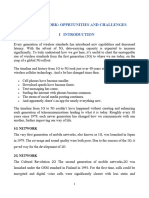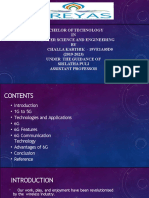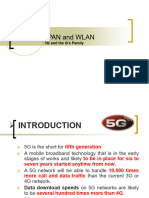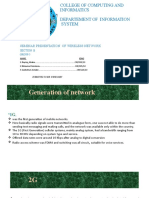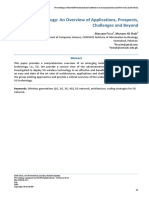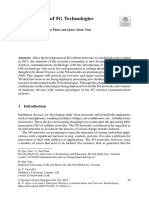0% found this document useful (0 votes)
50 views12 pagesComputer Project Class 11
This document provides an index and introduction for a student project on 5G networks. It summarizes the evolution of mobile communication standards from 1G to 4G and provides an overview of key 5G technologies including 5G NR, use of millimeter wave spectrum, massive MIMO, and small cell networks to deliver higher speeds and network capacity. The project will further explore 5G applications and the economic impact of 5G.
Uploaded by
sampritmodiCopyright
© © All Rights Reserved
We take content rights seriously. If you suspect this is your content, claim it here.
Available Formats
Download as DOCX, PDF, TXT or read online on Scribd
0% found this document useful (0 votes)
50 views12 pagesComputer Project Class 11
This document provides an index and introduction for a student project on 5G networks. It summarizes the evolution of mobile communication standards from 1G to 4G and provides an overview of key 5G technologies including 5G NR, use of millimeter wave spectrum, massive MIMO, and small cell networks to deliver higher speeds and network capacity. The project will further explore 5G applications and the economic impact of 5G.
Uploaded by
sampritmodiCopyright
© © All Rights Reserved
We take content rights seriously. If you suspect this is your content, claim it here.
Available Formats
Download as DOCX, PDF, TXT or read online on Scribd
/ 12

